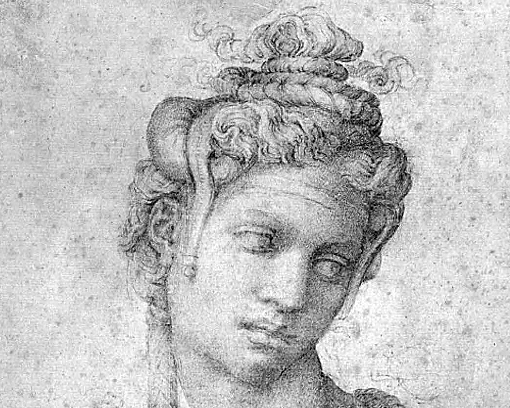In the 16th century, Michelangelo gained worldwide fame for his work on the ceiling of the Sistine Chapel, the statue “David” and Saint Peter’s Basilica. Despite his renown, there were times when he could not express his thoughts on paper as well as he imagined them. Many of these drawings were burned before reaching the public eye. Luckily for the College of William and Mary, several of these remain intact and will come to the Muscarelle Museum of Art next year.
For a short time in 2013, a selection of works by Michelangelo di Lodovico Buonarroti Simoni will be housed in Williamsburg. The exhibit will be on display at the Muscarelle February 9 through April 14, when it will travel to the Museum of Fine Arts in Boston.
These 26 drawings are the center of an international exhibition entitled, “Michelangelo: Sacred and Profane Masterpiece Drawings from the Casa Buonarroti.” The Casa Buonarroti is an art museum in Florence dating back to the 17th century in Florence.
Guest speaker Pina Ragionieri, director of Casa Buonarroti, spoke in Andrews Hall Tuesday about the upcoming exhibit and about Michelangelo’s life and drawings. She noted that Michelangelo left Florence in 1534 and did not return before his death in 1564.
“He never came back home, but he never forgot his family,” Ragionieri said.
His hometown of Florence never forgot him either, and the Muscarelle directors are hoping students and the Williamsburg community will not forget the renowned paintings that will soon be on display.
Dr. Aaron De Groft ’88, director of the Muscarelle, discussed the College’s opportunity to hold its second exhibition on the artist.
“It’s pretty crazy to say it’s our second Michelangelo show,” De Groft said. “Because we had such a wonderful time and have great relationships with the people in Florence and the people at the Michelangelo museum, we approached them about doing something spectacular for our 30th anniversary. … They saw fit to work with us on a major, major exhibition. We then persuaded them to let us have it for enough time that maybe we could share it with one other venue [to] help with the cost and promote the Casa Buonarroti.”
De Groft helped build the relationship between the Muscarelle and Casa Buonarroti through the study abroad program in Florence. Professor John Spike, distinguished scholar in residence at the Muscarelle, lives in Florence during his summers and, along with former professor of art and art history Miles Chappell, has helped to strengthen the connection between the two museums.
Kaitlin Noe ’14 works as an intern in the marketing department at the Muscarelle. She sees the upcoming Michelangelo exhibit as a great opportunity for the College and hopes students will come to view the works.
“A number of the drawings that are coming have never been shown in the U.S. before,” Noe said. “The drawings show his methodology. … They vary in size and include drawings that were planned for paintings and then a lot of his architectural plans.”
The pieces include a drawing of Cleopatra and designs for military and church fortifications. Two of the drawings bear Michelangelo’s signature.
Noe also talked about getting more students to come to the Michelangelo exhibit.
“One of the things we’re thinking about is having a student opening,” she said. “The show has an official opening for Williamsburg community members and some museum members … but we want to have a student-targeted opening that would involve various entertainment [groups] or organizations that are student run and are aimed more at the College community.”
The staff at the Muscarelle, along with students like Noe, wants students to explore the Muscarelle to expand their liberal arts education. Noe mentioned the First Tuesday Lectures the Muscarelle coordinates every month for students, and De Groft noted that the College is hoping to add a museum studies minor to its program.
De Groft also talked about the significance of the works that will be coming to the Muscarelle.
“Many of these drawing are about Michelangelo just studying — studying movements, studying anatomy, studying figures and how they interact. … They’re his thoughts on a page, and that’s why they’re so important.”

